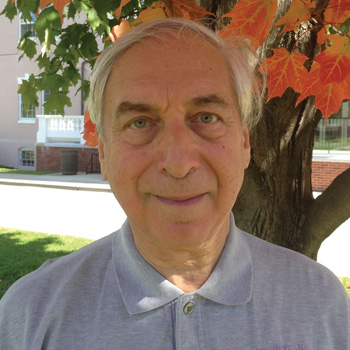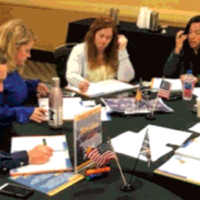Though I normally teach courses about astronomy and astrophysics, I started giving a seminar on Science and Pseudoscience a few years ago, and it has proven to be popular and worthwhile for students and for me alike. (We have excellent students at Williams College, which has played a major role in our being rated number 1 among national colleges by U.S. News & World Report in most recent years.) Each week highlighting a different topic, we discuss scientific standards, how to evaluate claims and what is good for individuals and for the public.
My course is framed in terms of two important historical documents: C. P. Snow’s Two Cultures and the Scientific Revolution and Martin Gardner’s Fads & Fallacies in the Name of Science. The former deals with the animosity between scientists and those identifying with the humanities, using for an example, that humanists don’t mind saying that they don’t know the second law of thermodynamics, whereas scientists would be embarrassed to say that they don’t know anything about Shakespeare. The latter deals with, unfortunately, pseudoscientific things, some of which are fortunately in the past, such as orgone and N-rays, while others are still with us, such as homeopathy, chiropractic and osteopathy.
Perhaps the most obvious harmful effect of pseudoscience is the completely debunked link between vaccines and autism, with the doctor who first advanced the idea even losing his medical license. Percentages of vaccinated Americans in certain areas have declined enough to eliminate the “herd immunity” that protects everyone given that a sufficiently high fraction is immunized. Further, rumors spread in some countries that Americans are trying to sterilize women through vaccination have led to many illnesses. And the widespread belief in Pakistan that Osama bin Laden was found through a false polio vaccination campaign (it was really hepatitis B, but a vaccination campaign of any kind shouldn’t have been used) may have led to many children winding up paralyzed or dead. (Just Google “polio hepatitis bin Laden” to see many references.) In California, a whooping cough epidemic of about 3 years ago, resulting in several infant deaths, needn’t have happened and wouldn’t have if DTaP vaccinations had been more widespread.
How do these considerations affect our ideas of food safety? We must realize what is actually known and tested as opposed to mere fears. All food is made of chemicals. Salmonella occurs on both “organic” and regular chicken products, as we are learning in a current outbreak based in California.
Further, genes are normal. All women have BRCA genes; it is the unusual mutations of those genes, not the genes themselves, which express increased risks of breast cancer.
Somehow the idea of modifying the genes in food has become controversial. As a child, I learned how Luther Burbank modified genes in the 19th century. Googling shows me how Burbank developed hundreds of kinds of plants, including even the Idaho potato (in 1871). We should be happy that 21st-century methods enable us to modify foods quicker and more reliably.
Just as 19th-century potatoes could be modified to combat blight, 21st-century foods can be modified to add nutrients, resist insect antagonists, resist frost, resist the pesticides that can be used to kill interspersed weeds and provide increased quantities in the same growth period.
If people are legitimately worried about the safety of what they ingest, it would make more sense to turn to the dietary supplement industry, which is not regulated by the U.S. Food and Drug Administration by the same standards applied to food and drugs because of a Congressional fiat. It isn’t just athletes who mistakenly take substances that are banned from their sports or that are bad for their health.
A current political fight is over whether genetically modified foods need be labeled in the supermarket. In a perfect world, people would understand that so-called GMOs (genetically modified organisms) are merely items in which the genetic modification has been done in a lab rather than by tedious breeding. (The occasional insertion of a gene from a different type of organism shouldn’t trouble anyone.) However, given the lack of widespread understanding, labeling GMOs would unfortunately tend to taint them in many people’s eyes, needlessly.
For us to have safe food, animals should be raised carefully and cleanly enough so that they don’t have to be fed antibiotics, which wind up helping more virulent strains of viruses and bacteria evolve. What we need is advances in the science, more care on the part of providers—something we see is needed in the chicken industry as of October 2013—and careful inspections by outside inspectors who represent the eaters: all of us. As President Ronald Reagan famously said, “Trust but verify.”
I was asked to write this editorial because I had a letter in Science Magazine (May 31, 2013) about the new national standards, emphasizing the ordinariness of so many of them instead of their stressing the excitement of new results and the inspiration our students should get from their science teaching. I pointed out that we should be emphasizing how science keeps advancing, and that we should not take scientific results from a hundred years ago, or even decades ago, as examples of current understanding. In food science, too, we should be aware of the current scientific understandings rather than relying on old views.
p>




